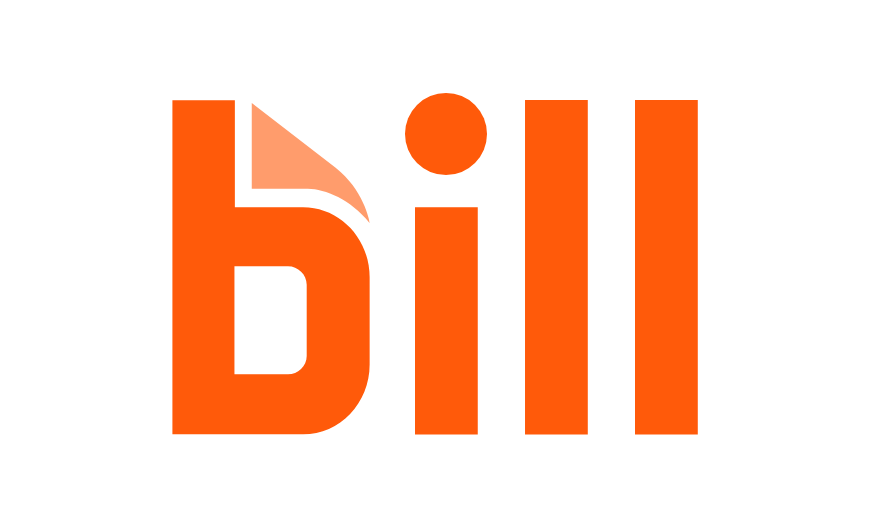COLOGNE, Germany: Digitalisation offers great possibilities for the dental laboratory: a wide selection of materials, high manufacturing flexibility and new methods for producing complete prostheses.
There are stable long-term trends and fast-paced ones when it comes to digital dental technologies, and dental technicians who combine these two profit the most. A visit to IDS 2019 will definitely help to gain a comprehensive overview and make unerring decisions with an eye to the future. A number of innovations in the area of digital technologies have made the processing of specific materials possible or economically attractive. Today, it is possible to manufacture crown and bridge frameworks that are made from zirconia, lithium disilicate, hybrid ceramics, high performance plastics, and alloys that either contain gold or are free of precious metals.
In terms of manufacturing choices, dental laboratories have become very flexible: they can decide whether to produce in-house or outsource tasks to laboratory partners or external industrial services. Today, even custom abutments can be manufactured in-house or ordered from an external manufacturer or supplier. Regarding fixed dentures, CAD/CAM systems have become well established in the past several years, and new possibilities in CAM of removable dentures are constantly being created. For instance, complete, duplicate and immediate prostheses can be manufactured in the dental laboratory by means of computer-supported procedures, allowing the dentist to continue performing the work tasks with which he or she is most familiar.
Just like prosthetics, orthodontics is considered to be a relative newcomer to the digital playground, compared with other dental fields. These days, dental laboratories contribute to dental treatments by providing virtual set-ups. In doing so, bracket positions can be set, for instance. Subsequently, the dental technician fabricates the respective appliance and creates the transfer tray by means of a 3-D printer. This procedure brings a wide variety of creative possibilities to the dental laboratory: occlusal splints, surgical guides, custom trays, orthodontic appliances or provisional crowns and bridges—virtually everything can be manufactured using 3-D printing technologies. If in accordance with the guidelines for Class IIa medical devices, the respective appliance can be used for printed short- and long-term provisionals. Furthermore, printed alloys, such as cobalt–chromium, give access to new applications such as digital model casting prostheses.
Tags:
NEOLab, located in Andover in Massachusetts in the US, is the largest privately owned orthodontic laboratory in the country. With more than 45 years in ...
COLOGNE, Germany: Further improving treatment workflows, making optimal use of digital technologies and ensuring practice success both today and in the ...
Dynamic real-time surgical navigation digital imaging, diagnostics and impressions, and the use of computer-aided design/computer-aided manufacture ...
The 40th IDS marks 100 years of the trade fair, and this is surely a reason to celebrate, says Mark Stephen Pace, chairman of the board of the Association ...
How can dental teams intelligently integrate digitalisation into everyday routines? As part of the build-up to the online dental congress AG.Live CON, which...
SHLOMI, Israel: Over two decades ago, digitalisation started to transform dentistry, but the process has not been accomplished yet. We are currently in a ...
BONN, Germany: With the 38th International Dental Show (IDS) starting on 12 March in Cologne in Germany, the organisers invited journalists to the IDS ...
Oratomic4D is a technology company based in Sydney in Australia specialising in 3D-printing technology and developing and manufacturing biomimetic dental ...
GLASGOW, UK: The British Orthodontic Society has announced that the theme of the 2019 British Orthodontic Conference (BOC), to be held in Glasgow in ...
At the 37th International Dental Show, dental laser specialiest Fotona officially announced its new Adaptive Structured Pulse (ASP) technology, a key ...
Live webinar
Mon. 22 April 2024
10:00 am EST (New York)
Prof. Dr. Erdem Kilic, Prof. Dr. Kerem Kilic
Live webinar
Tue. 23 April 2024
1:00 pm EST (New York)
Live webinar
Wed. 24 April 2024
8:00 am EST (New York)
Dr. Yin Ci Lee BDS (PIDC), MFDS RCS, DClinDent Prosthodontics, Dr. Ghida Lawand BDS, MSc, Dr. Oon Take Yeoh, Dr. Edward Chaoho Chien DDS, DScD
Live webinar
Wed. 24 April 2024
1:00 pm EST (New York)
Live webinar
Fri. 26 April 2024
12:00 pm EST (New York)
Live webinar
Mon. 29 April 2024
12:30 pm EST (New York)
Prof. Roland Frankenberger Univ.-Prof. Dr. med. dent.
Live webinar
Tue. 30 April 2024
1:00 pm EST (New York)



 Austria / Österreich
Austria / Österreich
 Bosnia and Herzegovina / Босна и Херцеговина
Bosnia and Herzegovina / Босна и Херцеговина
 Bulgaria / България
Bulgaria / България
 Croatia / Hrvatska
Croatia / Hrvatska
 Czech Republic & Slovakia / Česká republika & Slovensko
Czech Republic & Slovakia / Česká republika & Slovensko
 France / France
France / France
 Germany / Deutschland
Germany / Deutschland
 Greece / ΕΛΛΑΔΑ
Greece / ΕΛΛΑΔΑ
 Italy / Italia
Italy / Italia
 Netherlands / Nederland
Netherlands / Nederland
 Nordic / Nordic
Nordic / Nordic
 Poland / Polska
Poland / Polska
 Portugal / Portugal
Portugal / Portugal
 Romania & Moldova / România & Moldova
Romania & Moldova / România & Moldova
 Slovenia / Slovenija
Slovenia / Slovenija
 Serbia & Montenegro / Србија и Црна Гора
Serbia & Montenegro / Србија и Црна Гора
 Spain / España
Spain / España
 Switzerland / Schweiz
Switzerland / Schweiz
 Turkey / Türkiye
Turkey / Türkiye
 UK & Ireland / UK & Ireland
UK & Ireland / UK & Ireland
 Brazil / Brasil
Brazil / Brasil
 Canada / Canada
Canada / Canada
 Latin America / Latinoamérica
Latin America / Latinoamérica
 USA / USA
USA / USA
 China / 中国
China / 中国
 India / भारत गणराज्य
India / भारत गणराज्य
 Japan / 日本
Japan / 日本
 Pakistan / Pākistān
Pakistan / Pākistān
 Vietnam / Việt Nam
Vietnam / Việt Nam
 ASEAN / ASEAN
ASEAN / ASEAN
 Israel / מְדִינַת יִשְׂרָאֵל
Israel / מְדִינַת יִשְׂרָאֵל
 Algeria, Morocco & Tunisia / الجزائر والمغرب وتونس
Algeria, Morocco & Tunisia / الجزائر والمغرب وتونس
 Middle East / Middle East
Middle East / Middle East
:sharpen(level=0):output(format=jpeg)/up/dt/2024/04/IDEM-Singapore-2024-Masterclass-Alleman_1.jpg)
:sharpen(level=0):output(format=jpeg)/up/dt/2024/04/IDEM-Singapore_2_Asiga.jpg)
:sharpen(level=0):output(format=jpeg)/up/dt/2024/04/IDEM-Singapore-2024_5_Invisalign.jpg)
:sharpen(level=0):output(format=jpeg)/up/dt/2024/04/IDEM-Singapore-2024-Matthias-Kupper.jpg)
:sharpen(level=0):output(format=jpeg)/up/dt/2024/04/Dental-surgeons-have-an-important-role.jpg)












:sharpen(level=0):output(format=png)/up/dt/2010/11/Nobel-Biocare-Logo-2019.png)
:sharpen(level=0):output(format=png)/up/dt/2023/03/ACTEON_NEW-logo_03-2024.png)
:sharpen(level=0):output(format=png)/up/dt/2013/04/Dentsply-Sirona.png)
:sharpen(level=0):output(format=png)/up/dt/2022/01/Straumann_Logo_neu-.png)
:sharpen(level=0):output(format=png)/up/dt/2022/01/Ivoclar_Logo_19-01-2022.png)
:sharpen(level=0):output(format=png)/up/dt/2023/11/Patent%E2%84%A2-Implants-_-Zircon-Medical.png)
:sharpen(level=0):output(format=jpeg)/up/dt/2019/03/795_koelnmesse_026.jpg)

:sharpen(level=0):output(format=jpeg)/up/dt/2024/04/IDEM-Singapore-2024-Masterclass-Alleman_1.jpg)
:sharpen(level=0):output(format=gif)/wp-content/themes/dt/images/no-user.gif)
:sharpen(level=0):output(format=jpeg)/up/dt/2023/10/In-the-laboratory-Automation-rules-the-future-of-3D-printing_1-.jpg)
:sharpen(level=0):output(format=jpeg)/up/dt/2019/01/Dentsply-Sirona-at-IDS-2019-Building-success-of-the-dental-practice-and-laboratory-EDITED.jpg)
:sharpen(level=0):output(format=jpeg)/up/dt/2020/03/Dynamic-navigation%E2%80%94The-future.jpg)
:sharpen(level=0):output(format=jpeg)/up/dt/2023/02/Shaping-the-dental-future-with-100%E2%80%AFyears-of-success-at-IDS-1.jpg)
:sharpen(level=0):output(format=jpeg)/up/dt/2021/04/Interview-Digitisation-brings-patient-to-the-laboratory-with-247-availability.jpg)
:sharpen(level=0):output(format=jpeg)/up/dt/2019/02/Digitalisation-of-the-gold-standard-of-implantology.jpg)
:sharpen(level=0):output(format=jpeg)/up/dt/2019/01/ids_19_001_118_web_full-width.jpg)
:sharpen(level=0):output(format=jpeg)/up/dt/2023/12/Jivan_Fig.1_1920x1080.jpg)
:sharpen(level=0):output(format=jpeg)/up/dt/2018/11/shutterstock_12274503611-min.jpg)
:sharpen(level=0):output(format=jpeg)/up/dt/2018/08/Bildschirmfoto-2018-08-31-um-12.18.18.jpg)





:sharpen(level=0):output(format=jpeg)/up/dt/2024/04/IDEM-Singapore-2024-Masterclass-Alleman_1.jpg)
:sharpen(level=0):output(format=jpeg)/up/dt/2024/04/IDEM-Singapore_2_Asiga.jpg)
:sharpen(level=0):output(format=jpeg)/up/dt/2024/04/IDEM-Singapore-2024_5_Invisalign.jpg)
:sharpen(level=0):output(format=jpeg)/wp-content/themes/dt/images/3dprinting-banner.jpg)
:sharpen(level=0):output(format=jpeg)/wp-content/themes/dt/images/aligners-banner.jpg)
:sharpen(level=0):output(format=jpeg)/wp-content/themes/dt/images/covid-banner.jpg)
:sharpen(level=0):output(format=jpeg)/wp-content/themes/dt/images/roots-banner-2024.jpg)
To post a reply please login or register